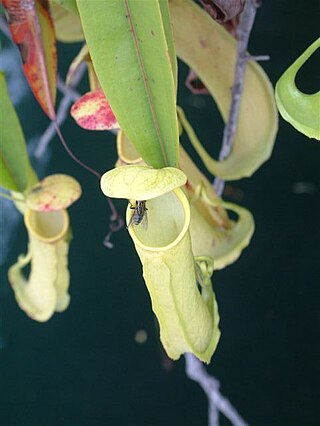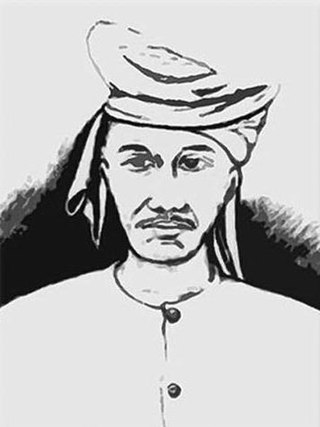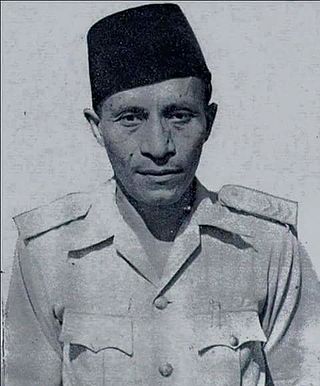
West Papua, formerly Irian Jaya Barat, is an Indonesian province located in Indonesia Papua. It covers most of the two western peninsulas of the island of New Guinea: the eastern half of the Bird's Head Peninsula and the whole of the Bomberai Peninsula, along with nearby smaller islands. The province is bordered to the north by the Pacific Ocean, to the west by Southwest Papua Province, the Halmahera Sea and the Ceram Sea, to the south by the Banda Sea, and to the east by the province of Central Papua and the Cenderawasih Bay. Manokwari is the province's capital and largest city. With an estimated population of 569,570 in mid-2023, West Papua is the least populous province in Indonesia after South Papua, following the separation off in 2022 of the western half of the Bird's Head Peninsula to create the new province of Southwest Papua, containing 52% of what had been West Papua's population. Its population density is similar to Russia.

Raja Ampat, or the Four Kings, is an archipelago located off of the northwest tip of Bird's Head Peninsula, Southwest Papua province, Indonesia. It comprises over 1,500 small islands, cays, and shoals around the four main islands of Misool, Salawati, Batanta, and Waigeo, and the smaller island of Kofiau.

Misool, formerly spelled Mysol or Misol, is one of the four major islands in the Raja Ampat Islands in Southwest Papua, Indonesia. Its area is 2,034 km2. The highest point is 561 m and the main towns are Waigama, located on the island's northwest coast, and Lilinta on the island's southeast coast.

Salawati is one of the four major islands in the Raja Ampat Islands in Southwest Papua, Indonesia. Its area is 1,623 km2. Salawati is separated from New Guinea to the southeast by the Sele Strait, and from Batanta to the north by the Pitt Strait.

Batanta is one of the four major islands in the Raja Ampat Islands in Southwest Papua province, Indonesia. Its area is 479.5 km2 and its highest point is 1184 m. The Pitt Strait separates it from Salawati Island, while the Dampier Strait separates it from Waigeo Island.
Bomberai Peninsula is located in the Western New Guinea region. It is south of the Bird's Head Peninsula, and Bintuni Bay separates the two peninsulas. To the west lies the Sebakor Bay and to the south Kamrau Bay. On the southeast Arguni Bay lies between the peninsula and the Bird's Neck Isthmus.

The Sultanate of Tidore was a sultanate in Southeast Asia, centered on Tidore in the Maluku Islands. It was also known as Duko, its ruler carrying the title Kië ma-kolano. Tidore was a rival of the Sultanate of Ternate for control of the spice trade and had an important historical role as binding the archipelagic civilizations of Indonesia to the Papuan world. According to extant historical records, in particular the genealogies of the kings of Ternate and Tidore, the inaugural Tidorese king was Sahjati or Muhammad Naqil whose enthronement is dated 1081 in local tradition. However, the accuracy of the tradition that Tidore emerged as a polity as early as the 11th century is considered debatable. Islam was only made the official state religion in the late 15th century through the ninth King of Tidore, Sultan Jamaluddin. He was influenced by the preachings of Syekh Mansur, originally from Arabia. In the 16th and 17th centuries, the Sultans tended to ally with either Spain or Portugal to maintain their political role but were finally drawn into the Dutch sphere of power in 1663. Despite a period of anti-colonial rebellion in 1780–1810, the Dutch grip on the sultanate increased until decolonization in the 1940s. Meanwhile, Tidore's suzerainty over Raja Ampat and western Papua was acknowledged by the colonial state. In modern times, the sultanate has been revived as a cultural institution.
Sailolof is a small port town in the province of Southwest Papua, Indonesia, some 1,686 miles from Jakarta. It is located on the west coast of Salawati Island in Sorong Regency. and is the administrative centre for the South Salawati District of Sorong Regency. Sailolof also constitutes a historic kingdom one of the Four Kings of Raja Ampat Islands in Southwest Papua. The town is located near the western coastal tip of the Bird's Head Peninsula.

Teminabuan is a district in South Sorong Regency, Southwest Papua, Indonesia. The district includes the town of Kaibus and its northern suburb of Kohoin. The district had a population of 11,627 at the 2010 Census and 19,491 at the 2020 Census; the official estimate as at mid 2023 was 19,876. The town of Kaibus is located in the southwestern-central part of the Bird's Head Peninsula, and had a population of 4,743 in mid 2022. The area was bombed between January and March 1967. It is served by Teminabuan Airport.
West Bird's Head languages are a small family of poorly documented Papuan languages spoken on the Bird's Head Peninsula of New Guinea.
Duriankari, or Duriankere, is a possibly extinct Papuan language of Indonesian Papua. It is associated with the village of Duriankari at the southern tip of the island of Salawati, which is part of the Raja Ampat Archipelago and is adjacent to the Bird's Head Peninsula of the West Papuan mainland.
Salawati is an Austronesian language spoken on the west of Salawati Island, in the Raja Ampat Islands in Indonesian New Guinea.

The Nuku rebellion was an anti-colonial movement that engulfed large parts of Maluku Islands and Western New Guinea between 1780 and 1810. It was initiated by the prince and later sultan of Tidore, Nuku Muhammad Amiruddin, also known as Prince Nuku or Sultan Nuku. The movement united several ethnic groups of eastern Indonesia in the struggle against the Dutch and was temporarily successful, helped by an alliance with the British East India Company. However, the movement was defeated after the demise of Nuku, and Maluku was restored under European rule. In 1995, Nuku was officially appointed a National Hero of Indonesia.

Nuku was the Sultan of Tidore from 1797 to 1805. He is best known for leading the Nuku Rebellion in the Maluku Islands and Papua against the Dutch colonial empire from 1780 until his death. Being a leader with great charisma, he gathered discontents from several ethnic groups and strove to restore Maluku to its pre-colonial division into four autonomous kingdoms. Nuku allied with the British against the Dutch and helped them conquer the Dutch stronghold in Ternate in 1801. In modern Indonesia he is commemorated as a pahlawan nasional.

Sultan Zainal Abidin Alting Syah was the 26th Sultan of Tidore in Maluku Islands, reigning from 1947 to 1967. He was also the appointed Governor of Irian Barat in 1956–1962 before the actual inclusion of Irian Barat in Indonesia, serving official Indonesian claims against Dutch colonial rule.

The Kingdom of Kaimana or Kingdom of Sran is one of the oldest Muslim kingdoms in West Papua, now Indonesia. The kingdom was established by Imaga, with the title Rat Sran Nati Pattimuni, traditionally in 1309.
Gurabesi was a legendary Papuan leader from Biak in West New Guinea, present-day Indonesia, who had a large role in tying part of the Papuans to the Islamic Sultanate of Tidore. He is commonly believed to have flourished in the 15th or early 16th century, although other sources point at a later date. His story symbolizes the beginnings of communication between the Malayo-Islamic and Papuan cultures.

Southwest Papua is the 38th province of Indonesia to be created, and was split off from West Papua on 8 December 2022. Despite being named southwest, it is a misnomer and this province is actually located in the northwest edge of Papua. The province comprises the Greater Sorong area which consists of Sorong City, Sorong Regency, South Sorong Regency, Maybrat Regency, Tambrauw Regency, and Raja Ampat Regency. The Bill (RUU) on the Establishment of the Southwest Papua Province was passed into law and therefore it became the 38th province in Indonesia with effect from 8 December 2022.
The Salawati Kingdom is the Islamic kingdom that once stood in Salawati Island, Raja Ampat Regency, Southwest Papua. The center of the Salawati kingdom was located in the Samate village which is currently located in the North Salawati district.
Tehit people are an ethnic group who live in the southern part of Doberai Peninsula. Their traditional settlements are concentrated around the Teminabuan District. According to the 2010 Indonesian census, Tehit people population were 15.972.










